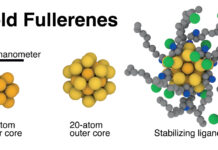
Carbon-carbon single bonds are one of the most important bonds in natural/artificial organic molecules and materials. Generally, they are regarded as being strong, irreversible, and static covalent bonds. However, chemical modification around the C–C bonds including the introduction of steric hindrance, electronic effects, and resonance stabilization can drastically lower their dissociation energies.
One extreme example is the central C–C bond in diarylbibenzofuranone (DABBF, Figure 1), which is known to reversibly cleave and reform under mild conditions. Recently, Professor Hideyuki Otsuka from Department of Chemical Science and Engineering, Tokyo Institute of Technology, Japan and his co-workers reported a series of works on the design and synthesis of functional polymers with DABBF. Previously, the antioxidant properties of DABBF have been the focus of attention rather than its dynamic nature, but recently, DABBF has been recognized as a dynamic covalent bonding unit and utilized in the field of polymer science.
Read more: Self-healing And Mechanochromic Polymers With Dynamic Carbon–Carbon Covalent Bonds
thumbnail courtesy of sciencetrends.com















